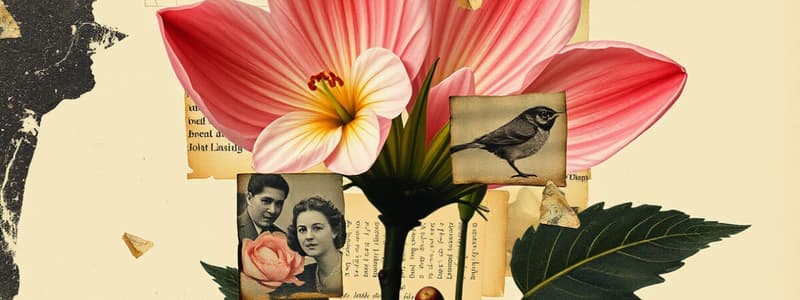Podcast
Questions and Answers
What does the term 'floriculture' refer to?
What does the term 'floriculture' refer to?
- The process of harvesting fruits
- The cultivation of flowering plants for gardens and landscapes (correct)
- The study of plant diseases
- The genetic modification of plants
Which structures in a flower develop the two most important units of sexual reproduction?
Which structures in a flower develop the two most important units of sexual reproduction?
- Gynoecium and Sepals
- Androecium and Petals
- Androecium and Gynoecium (correct)
- Stamen and Receptacle
What initiates the decision for a plant to produce flowers?
What initiates the decision for a plant to produce flowers?
- Seed germination process
- Hormonal and structural changes in the plant (correct)
- Environmental stressors such as drought
- Changes in soil nutrients
What is the main role of the androecium in a flower?
What is the main role of the androecium in a flower?
What is the function of floral primordium in plants?
What is the function of floral primordium in plants?
Flashcards are hidden until you start studying
Study Notes
Flower Significance in Culture
- Flowers play vital roles in social and cultural celebrations.
- Common examples include weddings, funerals, and festivals.
- Awareness of floriculture, the cultivation and management of flowering plants, is essential as it impacts both aesthetics and ecology.
Morphological and Embryological Importance
- Flowers are considered both morphological and embryological marvels in biological studies.
- They serve as the primary sites for sexual reproduction in plants.
- Key parts of a flower include the male (androecium) and female (gynoecium) reproductive structures.
Pre-Fertilisation Processes
- Before the flower develops, hormonal and structural changes signal the plant's readiness to flower.
- Floral primordium formation marks the initial stage of flower development.
- Inflorescences develop, which consist of floral buds and the mature flowers.
Reproductive Structures Development
- The androecium comprises a whorl of stamens, the male reproductive organ.
- The gynoecium represents the female reproductive organ, crucial for fertilization.
- Understanding the structure and function of both reproductive organs is essential for studying plant reproduction.
Studying That Suits You
Use AI to generate personalized quizzes and flashcards to suit your learning preferences.




